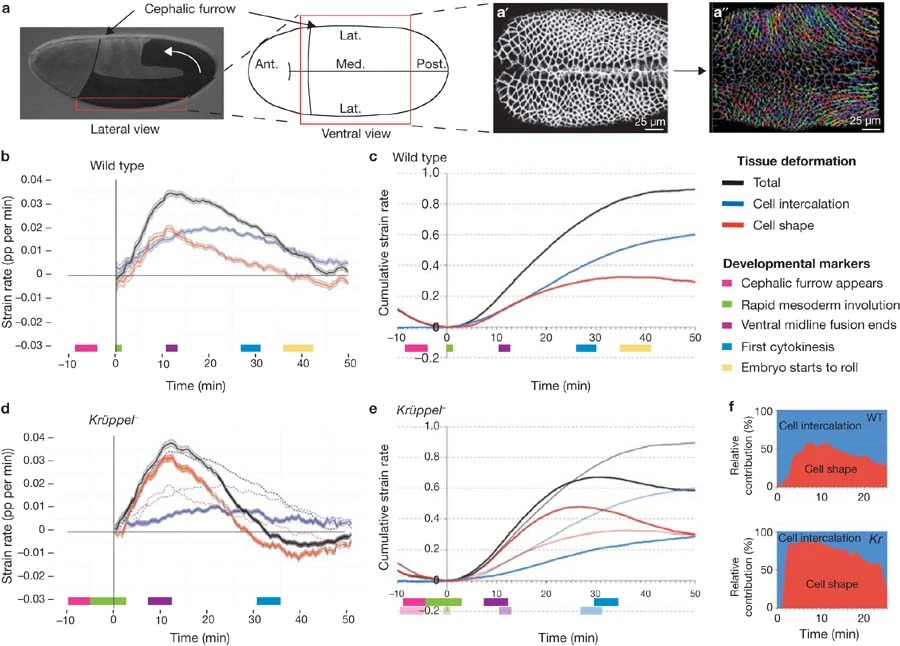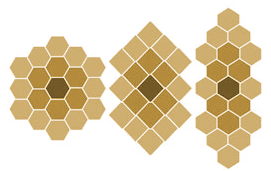
Citation
L.C. Butler, G.B. Blanchard, A.J. Kabla, N.J. Lawrence, D.P. Welchman, L. Mahadevan, R.J. Adams and B. Sanson
Nature Cell Biology 11(7):859-64 (2009)
Abstract
Abstract
Drosophila germ-band extension (GBE) is is an example of the convergence and extension movements that elongate and narrow embryonic tissues. To understand the collective cell behaviours underlying tissue morphogenesis, we have continuously quantified cell intercalation and cell shape change during GBE. We show that the fast, early phase of GBE depends on cell shape change in addition to cell intercalation. In antero-posterior patterning mutants such as those for the gap gene Krüppel, defective polarized cell intercalation is compensated for by an increase in antero-posterior cell elongation, such that the initial rate of extension remains the same. Spatio-temporal patterns of cell behaviours indicate that an antero-posterior tensile force deforms the germ band, causing the cells to change shape passively. The rate of antero-posterior cell elongation is reduced in twist mutant embryos, which lack mesoderm. We propose that cell shape change contributing to germ-band extension is a passive response to mechanical forces caused by the invaginating mesoderm.
Figure sample

(a) Lateral view of a Drosophila embryo: the extending germ band is shaded (anterior to the left, dorsal uppermost). The red box indicates the stack of optical sections taken by confocal imaging, which corresponds to the ventral field of view shown in the adjacent panel. The left-hand side of the field of view is positioned with the cephalic furrow as a landmark. (a′) Corresponding movie frame showing a projection of confocal sections through the cell apices labelled with DEcadGFP (Methods). The midline bisecting the embryo is the closing furrow through which the mesoderm has invaginated. (a′) Tracked movie frame showing the cell lineages (tracks), cell centroids (endpoints of tracks) and cell outlines recorded by the tracking software. (b) Summary of deformation (strain) rates in the AP axis for five wild-type embryos, showing total, cell intercalation and cell shape strain rates (see key). A strain rate is the ratio of the change in length to the original length, divided by the time interval, with units of proportion (pp) per minute. The lines show the mean strain rates for all five embryos, and the ribbon width represents the average standard error within a data set. The timing of developmental landmarks is shown for the five embryos recorded. (c) Cumulative representation of the same data, accumulating from t = 0. (d) Tissue deformation in the AP axis for five homozygous Krüppel− embryos. Dotted lines show the wild-type data for comparison. The shaded sections of the ribbons indicate when a given cell behaviour in the mutant was significantly different from the equivalent at that time in the wild type (P < 0.05). (e) Cumulative representation of the same data; for comparison, wild-type curves are shown as a lighter coloured line, and wild-type developmental landmarks as lighter coloured boxes on the same graph. (f) Relative instantaneous contribution of cell shape changes and cell intercalation to extension in wild-type (WT) and Krüppel− (Kr) mutant embryos, for the first 25 min of germ-band extension, which corresponds to the period when the total extension rate is the same in both genotypes.


